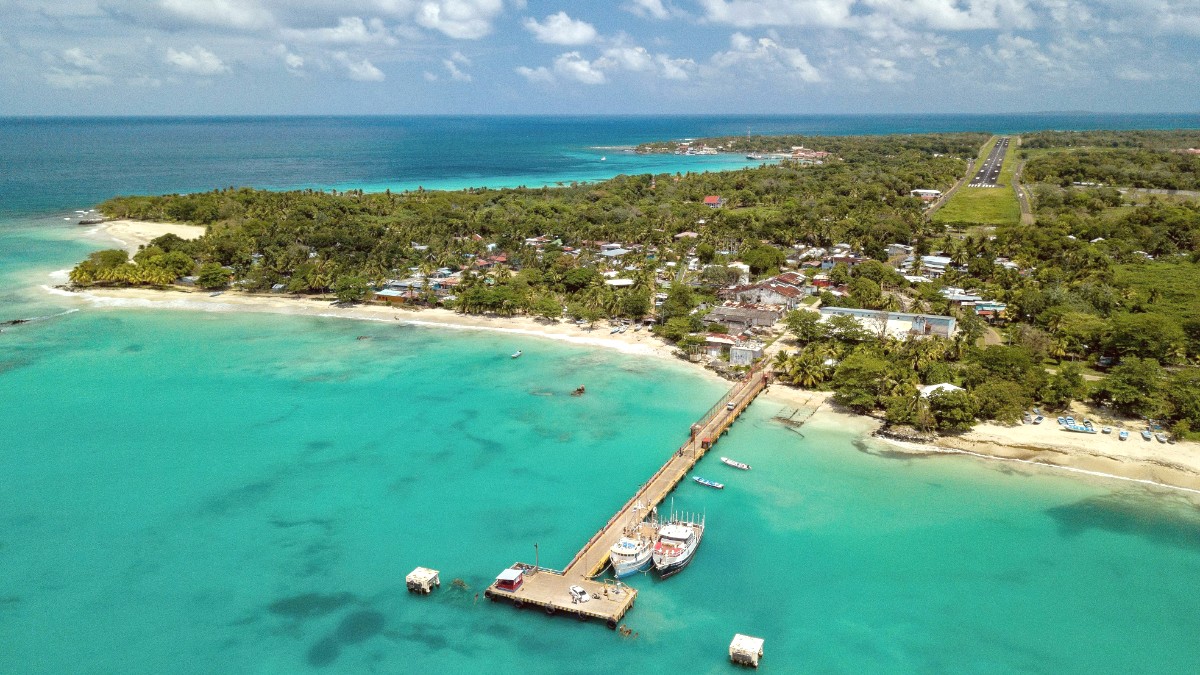
Caribbean Coast, Nicaragua
The dry season, from December to May, has less rainfall and more sunny days. This period presents calm seas and excellent visibility, good for water activities. Humidity, while present, feels less heavy.
The wet season, roughly June to November, shows increased precipitation. Rain often appears in short, intense bursts rather than continuous downpours. These showers generally clear quickly, leaving lush, green scenery. Humidity levels are highest at this time.
The wet season, approximately June to November, matches the Atlantic hurricane season. Direct hurricane impacts are rare, but tropical storms may bring significant rainfall, strong winds, and rough seas.
This weather may cause travel disruptions and affect services. Monitor weather forecasts during this period. Extreme temperatures are not an issue; the climate stays consistently warm.
July - October
Lowest prices, fewer tourists, lush scenery.
Higher chance of intense rain, risk of tropical storms.
June, November
Good weather, fewer tourists, potentially better prices.
Increased chance of rain, less predictable weather.
December - May
Less rain, sunnier days, calm seas, excellent for diving.
Higher prices, more crowds, especially around holidays.
Many nationalities, including citizens of the United States, Canada, the European Union, Australia, and New Zealand, enter Nicaragua for tourism without a visa for stays up to 90 days. This arrangement is part of the CA-4 agreement.
Passport valid for at least six months beyond your departure date from Nicaragua. Proof of onward travel, like a flight ticket out of Nicaragua, may be requested. Proof of sufficient funds to cover your stay may also be requested.
Approximately USD 10, typically paid in cash (USD).
Travelers complete this form upon entry, often provided on the plane or at the immigration desk.
A form regarding items brought into the country.
No specific permits are generally needed for tourism activities beyond standard entry.
A vaccination certificate is a requirement for arrivals from, or transit through, risk countries. It must be administered 10 days before arrival.
The Corn Islands offer options for various budgets, from backpackers to luxury travelers.
The official currency is the Nicaraguan Córdoba (NIO). US Dollars (USD) are widely accepted on the Corn Islands, especially for larger purchases and by tourist-oriented businesses. Carry small denominations of both USD and NIO.
Tipping is appreciated but not mandatory.
General daily costs vary with travel style. Prices may change based on season and specific choices.
Well-being is a consideration when traveling. This section presents health and safety advice to assist with a safe trip to the Corn Islands.
Yellow Fever vaccination is a requirement if you arrive from or transit through risk countries. Consult your doctor for other recommendations like Hepatitis A & B, Typhoid.
Dengue, Chikungunya, Zika, Malaria (low risk on islands). Use Insect repellent with DEET or Picaridin. Wear long sleeves and pants at dawn and dusk.
Practice good food and water hygiene. Avoid tap water unless purified. Carry Anti-diarrhea medication.
Big Corn Island has a small public hospital and private clinics. Little Corn Island has a small health post. Facilities are basic.
For serious emergencies, evacuation to mainland Nicaragua or a neighboring country may be necessary.
Tap water is generally not safe for drinking without purification. Use bottled water, Portable water filters, or filtered water from accommodations. Eat at reputable establishments; ensure food is thoroughly cooked.
The Corn Islands generally have lower crime rates than mainland Nicaragua. Most crime involves opportunistic petty theft. Violent crime is uncommon but not unheard of. Be aware of your surroundings, especially at night.
Look for policies covering medical emergencies and emergency medical evacuation.
Seek coverage for trip cancellation or interruption and lost luggage.
Confirm your policy specifically covers activities like scuba diving. Read the fine print.
Atlantic hurricane season runs from June 1 to November 30. During this period, severe weather may impact the islands.